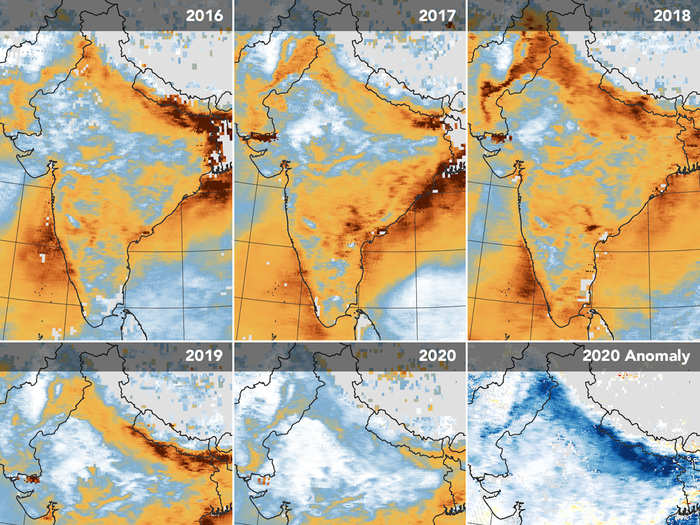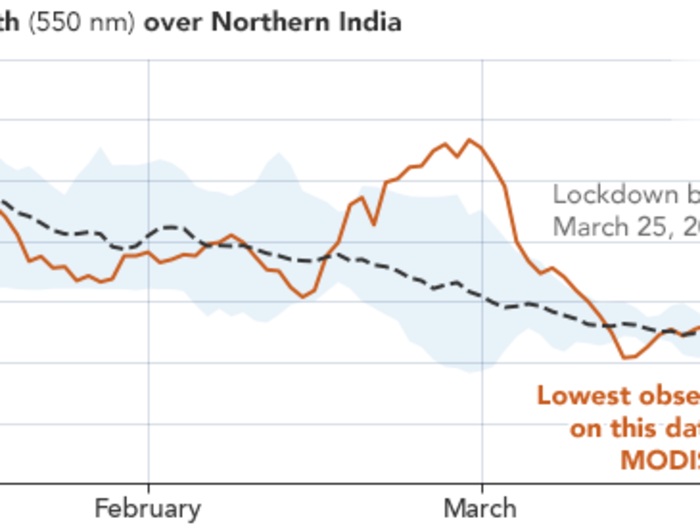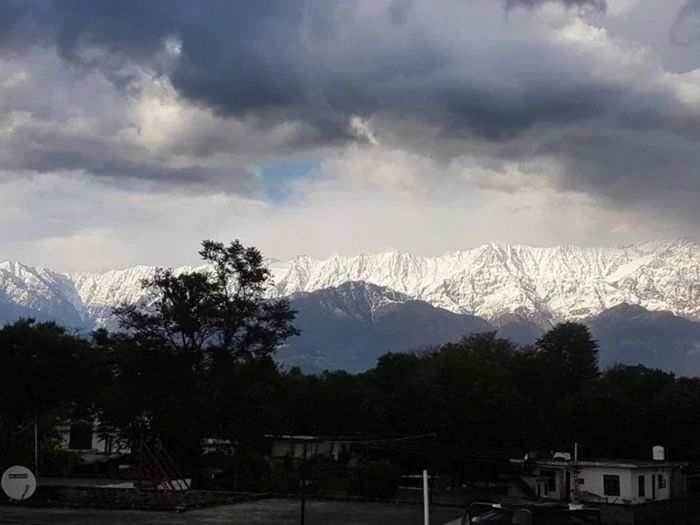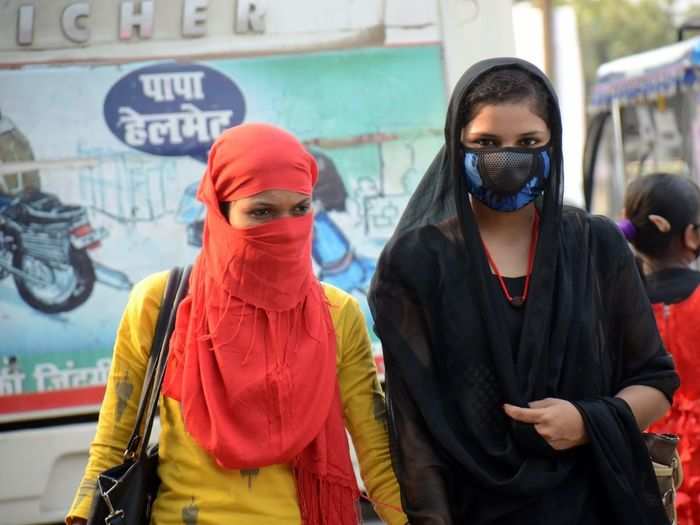Pictures show the drastic drop in air pollution over North India NASA
- Pictures show that the nationwide lockdown in India has had a positive effect on air quality.
- Aerosol levels in North India are the lowest in 20 years, according to NASA.
- As summer temperatures kick in, things may not remain as rosy with dust storms brewing in the Thar Desert and Arabian Peninsula.
As over 1.3 billion people in the world’s second-most populous country stay indoors, North India now has the cleanest air it’s seen in 20 years.
India is home to some of the world’s most polluted air. However, with the lockdown in place, most pollution creating activities have been cut out of the equation.
The National Aeronautics and Space Administration’s (
NASA) satellite sensors detect that aerosol levels are at a record low in the region. These fine solid particles or liquid droplets in the air normally result from human activities. Things like factories, traffic congestion, and a high frequency of flights — anything that requires fossil fuels to burn — normally push air quality down to unhealthy levels.
“We knew we would see changes in atmospheric composition in many places during the lockdown. But I have never seen aerosol values so low in the Indo-Gangetic Plain at this time of year,” said Pawan Gupta, a scientist at NASA’s Marshall Space Flight Center.
Cities like Kanpur, Faridabad, Varanasi and even the national capital had some of the worst air in 2019, according to the World Health Organisation (
WHO).
Pictures show just how dramatic the fall in air pollution has been due to the nationwide lockdown in India:
The anomaly — air pollution in North India is at a 20-year low
NASA
Maps from NASA show how the aerosol optical depth (AOD) measurements over India from 2016 to 2020 between March 31 to April 5. The last map in the series, dubbed ‘anomaly’, shows how the AOD in 2020 compares to the average between 2016 to 2019.
The data was retrieved by the Moderate Resolution Imaging Spectroradiometer (MODIS) on NASA’s Terra satellite.
The pollution drop can be seen on a chart
NASA
In the first few days of the lockdown, there was a drop in aerosol levels, however, it was difficult to determine whether the change was a direct result of people staying at home or just better weather.
“After the rainfall, I was really impressed that aerosol levels didn’t go up and return to normal. We saw a gradual decrease, and things have been staying at the level we might expect without anthropogenic emissions,” said Gupta.
Horizons re-appear after decades
GauravBhanu99/Twitter
In congruence, ground observation stations in India also reported a decrease in particle pollution in the region. Some people in the northern state of Punjab even reported seeing the Himalayas for the first time in decades.
Southern India is has a long way to go
BCCL
Traffic jam in Bengaluru during the lockdown
North India may have gotten rid of its pollution, but the same cannot be said for its southern states. Satellite data show aerosol levels have not yet decreased to the same extent. According to Gupta, levels seem to be slightly higher than in the past four years. The reasons are unclear but they could be related to recent weather patterns, agricultural fires, winds, or other factors.
The fairy tale may come to an end
BCCL
The air may be clear right now, but scientists expect the aerosol levels to rise again in the coming weeks. Dust concentration is normally lower in March and early April before the summer temperatures kick in. It’s likely that strong westerly winds will blow sand in from the Thar Desert and Arabian Peninsula. It’s going to be a game of waiting and watching to see if the overall AOD will remain below normal.





